Causes of mortality: This species is often killed in situations where it caused conflicts with people (e.g., damaged crops or other property, depredated livestock, or was perceived as a threat). It is also killed (poached) for its parts, particularly the gall bladder, which is used in Traditional Medicine, and can be sold (illegally) for high prices. Hunting for Asiatic black bears is legal only in Japan and Russia.
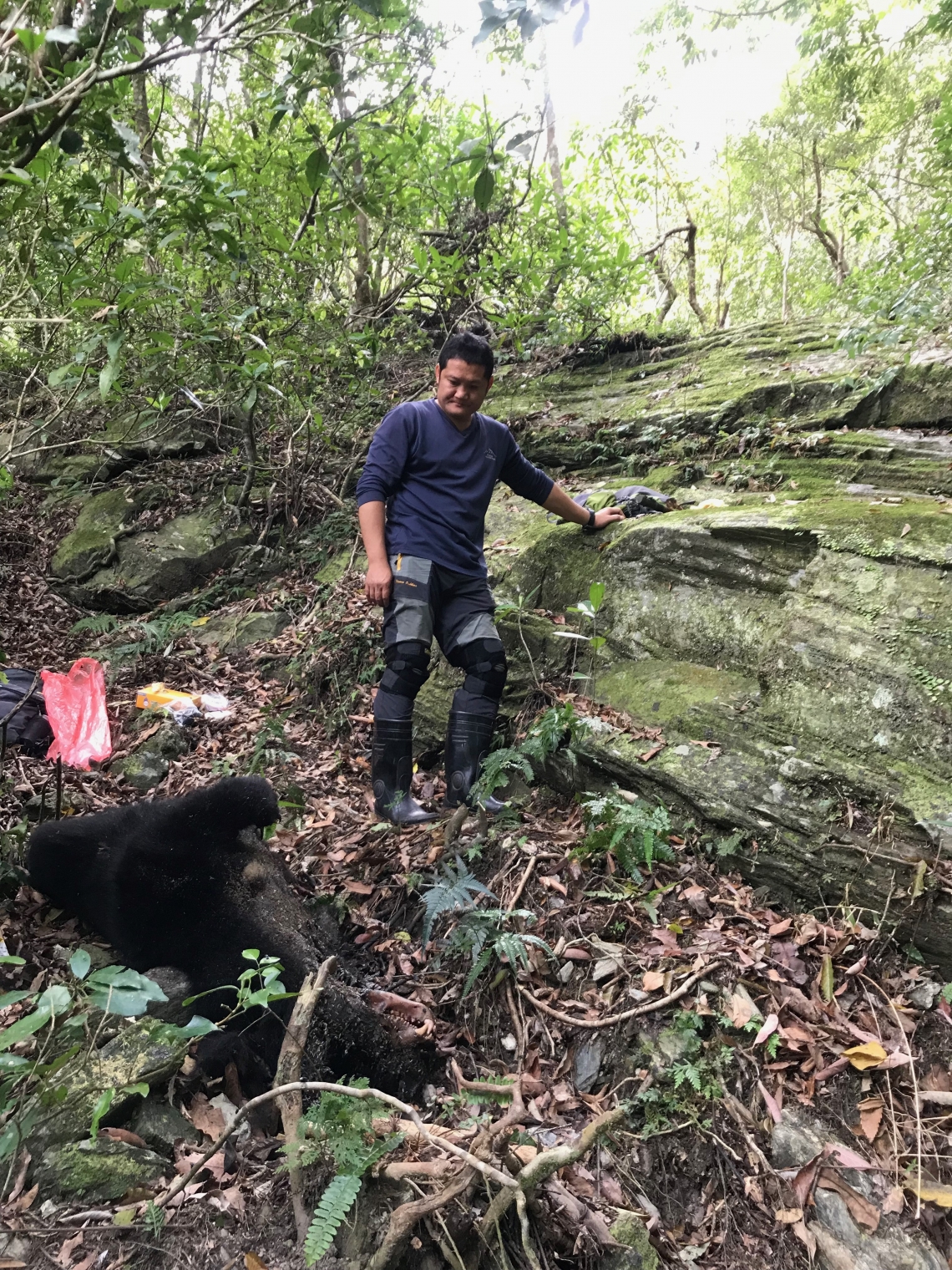
Asiatic black bear_U thibetanus_Taiwan_finding dead bear caught in snare_M.H. Hwang
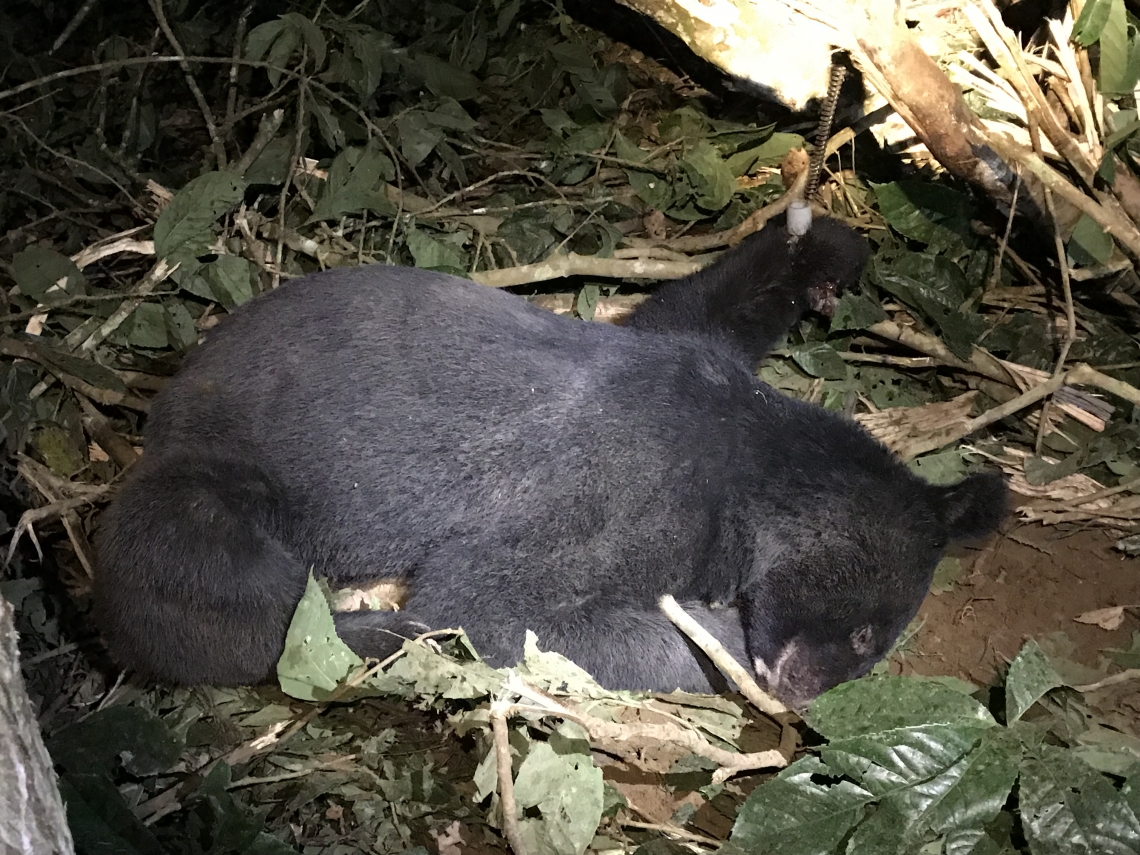
Asiatic black bear_U thibetanus_Taiwan_bear caught in snare_M.H. Hwang
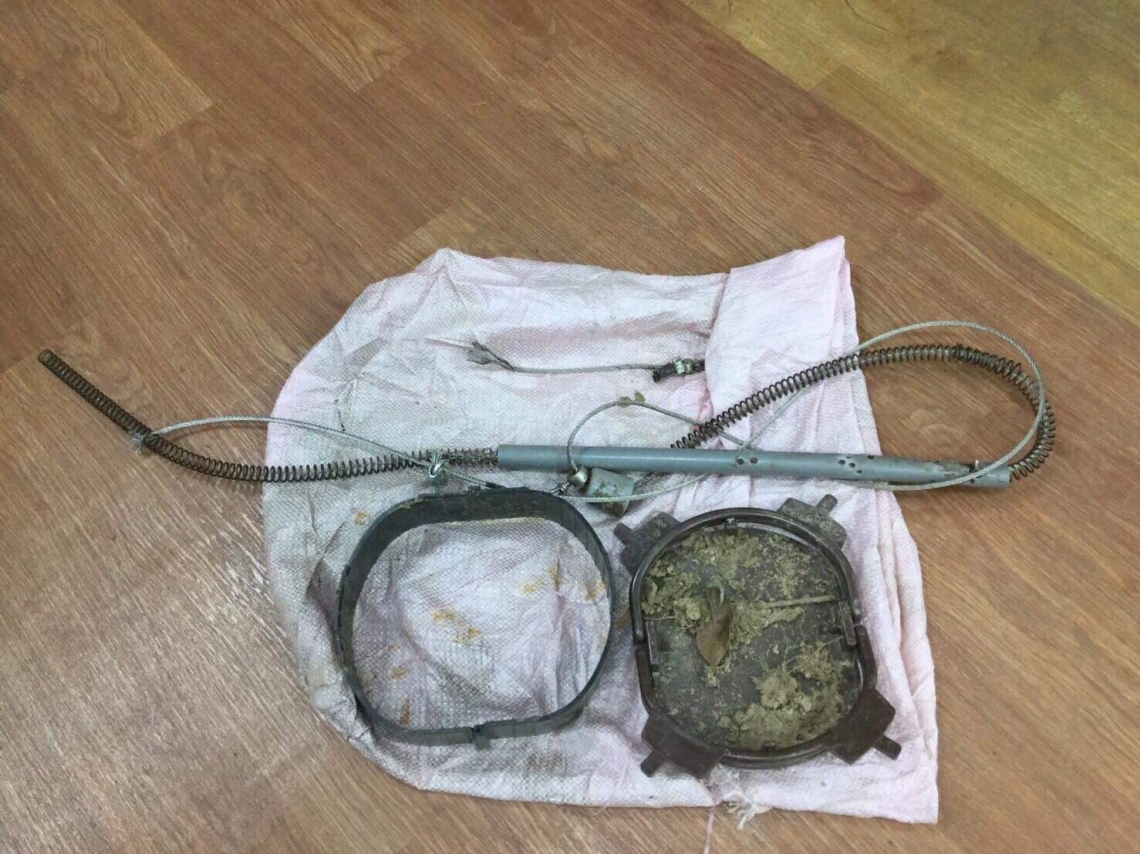
Asiatic black bear_U thibetanus_Taiwan_close up bear snare that caught and killed bear_M.H. Hwang
Population estimation methods: Bears can be individually identified by their chest markings in camera trap photos, yielding either a minimum count, or an actual population estimate from mark–recapture. However, this requires bears to be photographed in a standing position, enticed by a hanging bait. New methods of population estimation from camera trapping that do not require individual recognition have recently been tried. These are based on random encounters between bears and unbaited camera traps placed randomly in the environment, and require ancillary data on bears’ rates of movement.
Surveys of bear sign along fixed-width transects have been used to ascertain relative densities among different areas or habitats, but data can be hard to interpret, as sign density also varies with food conditions. Population trend has been deduced from sign, interviews with local people, changes in habitat, and evidence of poaching.

Asiatic black bear_U thibetanus_Lao PDR_examining claw marks on tree_D Garshelis

Asiatic black bear_U thibetanus_Lao PDR_fresh claw marks_D Garshelis

Asiatic black bear_U thibetanus_Japan_fresh and old claw marks_S Koike
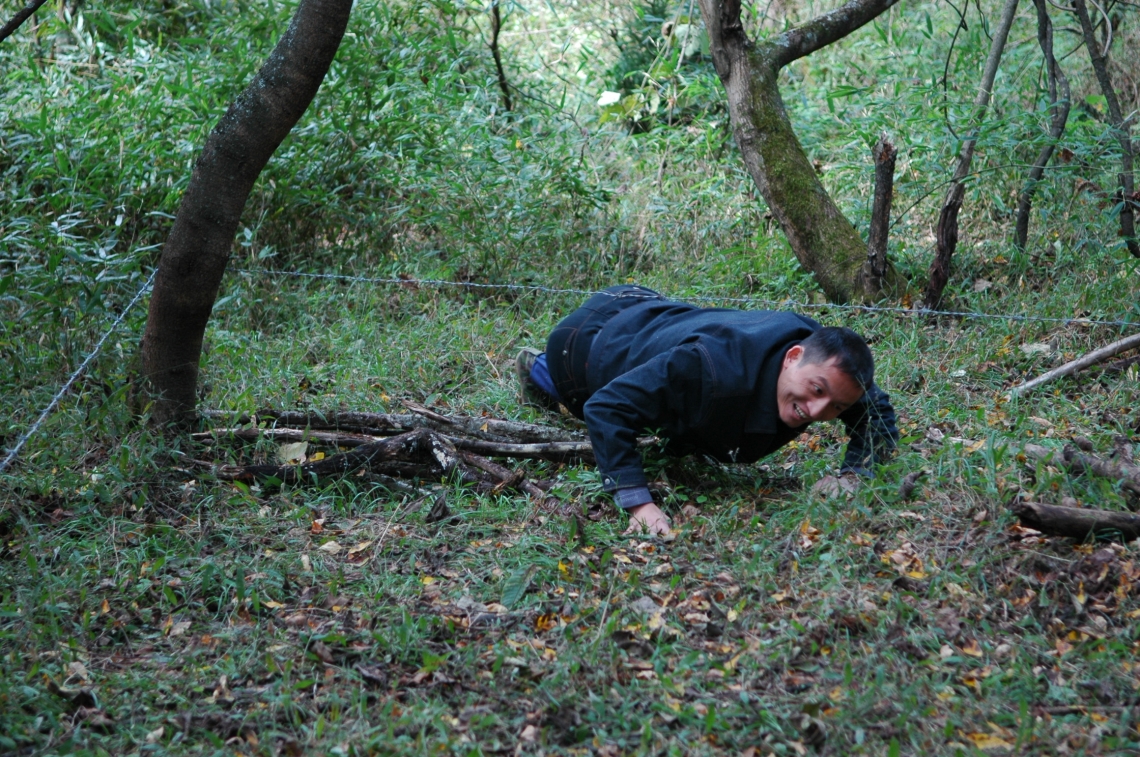
Asiatic black bear_U thibetanus_Sichuan China_testing barbed wire hair snare_D Garshelis
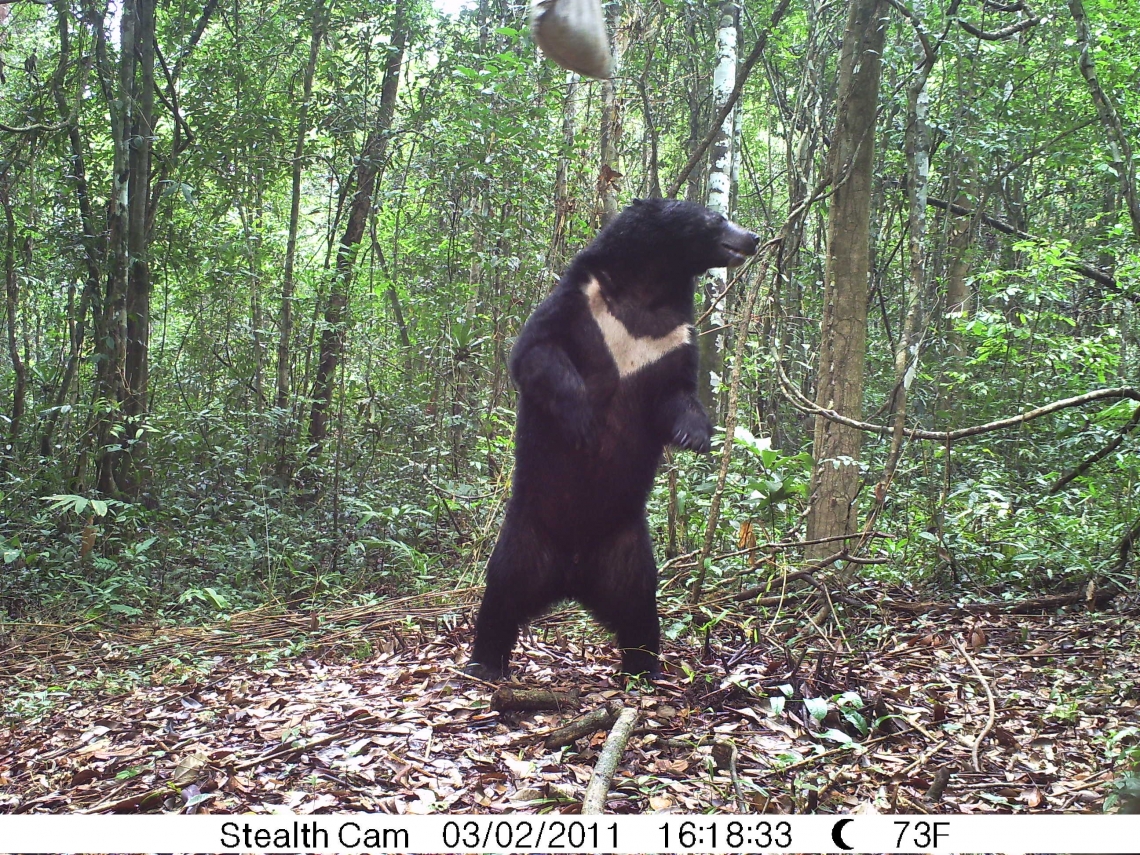
Asiatic black bear_U thibetanus_Thailand_camera trapping with suspended bait_D Ngoprasert

Asiatic Black bear_U thibetanus_Thailand_ population estimate by camera trap identification_D Ngoprasert
Local population estimates: Rigorous population estimates for this species have been produced in Thailand, based on mark–recapture with camera traps, using distinctive chest markings to identify individual bears. Densities ranged from 8–29 bears per 100 km² at different sites within the same reserve. A random-encounter model, not requiring individual identification, produced estimates of 55 bears per 100 km² in Japan, and <3 bears per 100 km² in northern India
Country and global population estimate: There is no reliable global population estimate for this species. The four countries with the largest populations used ad hoc procedures (with unknown reliability) to derive rough population estimates (which have not been updated in several years): China (~28,000), Japan (12,000–19,000), India (5,000–7,000), Russia (5,000–7,000).
Population trends: South Korea and Japan report stable to increasing populations of Asiatic black bears. In Japan, the range has expanded with increasing forest area and diminishing rural human populations. Bhutan and Thailand report stable populations, and India reports stable to declining populations. Forest area is increasing rapidly in south-central China, as a result of mandated government programs aimed at reducing flooding and erosion, and Asiatic black bear populations seem to have expanded accordingly. All other countries report probable declining numbers. The most severe declines, estimated at >60% in the past 30 years, were reported in Vietnam and Bangladesh.